BUILDING THE RECOVERY ( ‘A new and better normal’)
An hour with Simon Holmes à Court
13th May 2020
Simon’s special insights into Energy and Climate returned to Lighter Footprints with a review of the opportunities for a renewables based recovery from the pandemic.
He summarised and discussed the many innovations offered at the recent ‘Stimulus Summit’ – a fantastic event organised by the Smart Energy Council, Renew Economy and supported by the Lord Mayor’s Charitable Foundation. Speakers included Qld Premier Annastacia Palaszczuk, state energy ministers, Professor Ross Garnaut, and representatives from NGOs and energy companies.
So where should government stimulus money best spent?
The Summit identified ten renewable mega-projects worth investing in:
- Transform aluminum smelters into grid balancers.
- Star of the South offshore wind farm.
- Rooftop solar on low-income housing.
- Power up farming and renewables.
- BZE – One million jobs plan.
- Asian renewable energy hub.
- Copper-string 2.0 (Townsville to Mt Isa).
- Renewable energy zones (NSW, VIC and SA).
- Battery of the Nation (Tas.).
- Renewable energy Superpower.
Refitted Aluminium Smelters
The use of heat exchangers in aluminium smelters turns them from massive, inflexible electricity users into valuable grid stabilisers. We have 4 struggling aluminium smelters, but with this new technology they can become a virtual battery to help stabilize the grid. Simon had visited one of these refitted smelters in Germany. He described how once refitted, they can be used to help old coal fired power stations to cope with peak demands. They can make more money in grid support than they do producing aluminium! The efficiency is better than that provided by Tesla batteries or Snowy 2.0 and it is cheaper.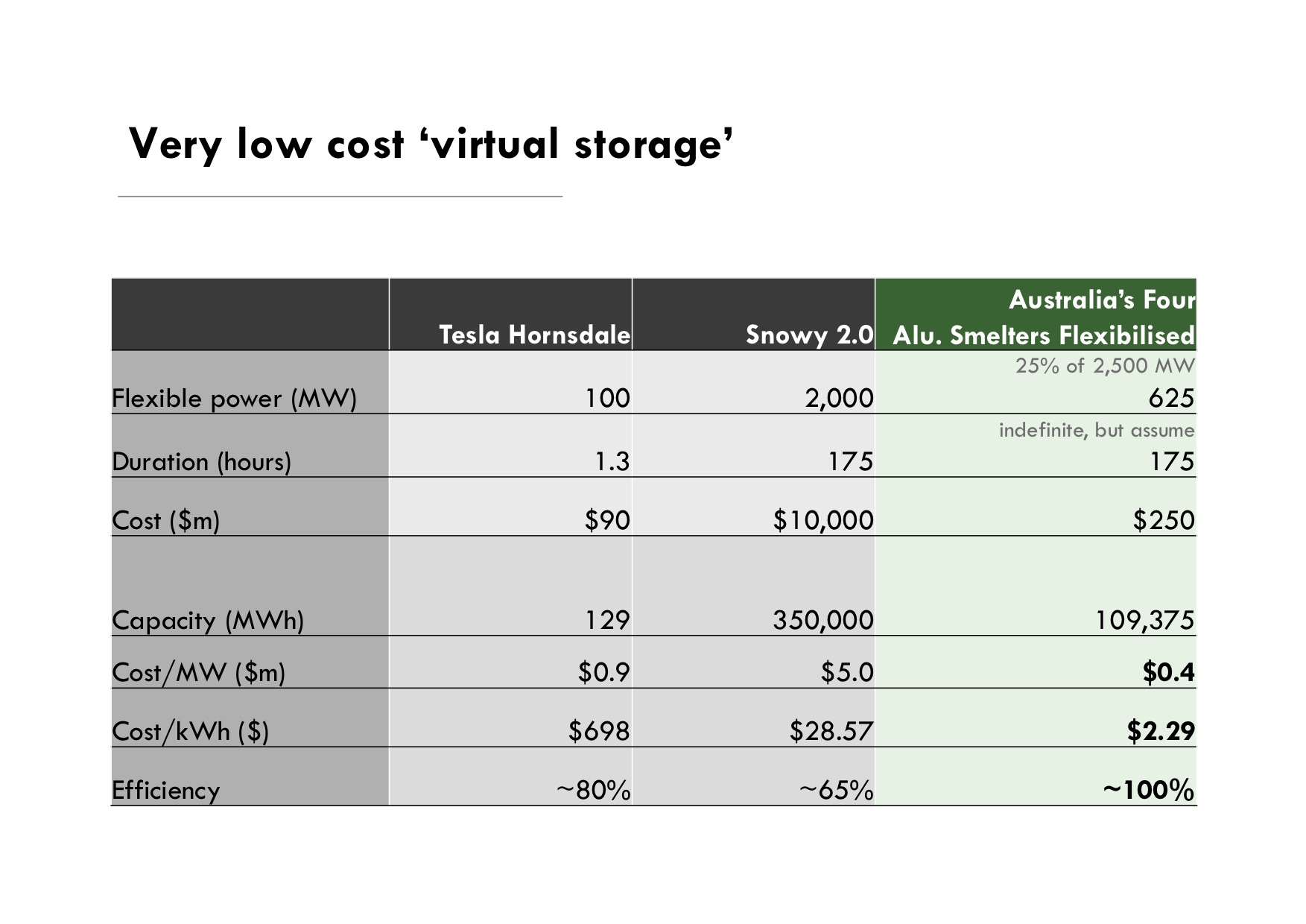 Green Steel
Green Steel
The recent Grattan Institute report outlined what could be done with extensive low-cost renewable energy and iron ore – Australian produced green steel that uses renewable hydrogen to displace coking coal. This is a great opportunity to value-add here. If we provide just 6.5% of the global steel it can provide $65bn in export revenue and 25,000 jobs in strategic areas. There are calls for federal funding of a flagship project. We already have electric arc furnaces powered by renewables, so we know the pathway.
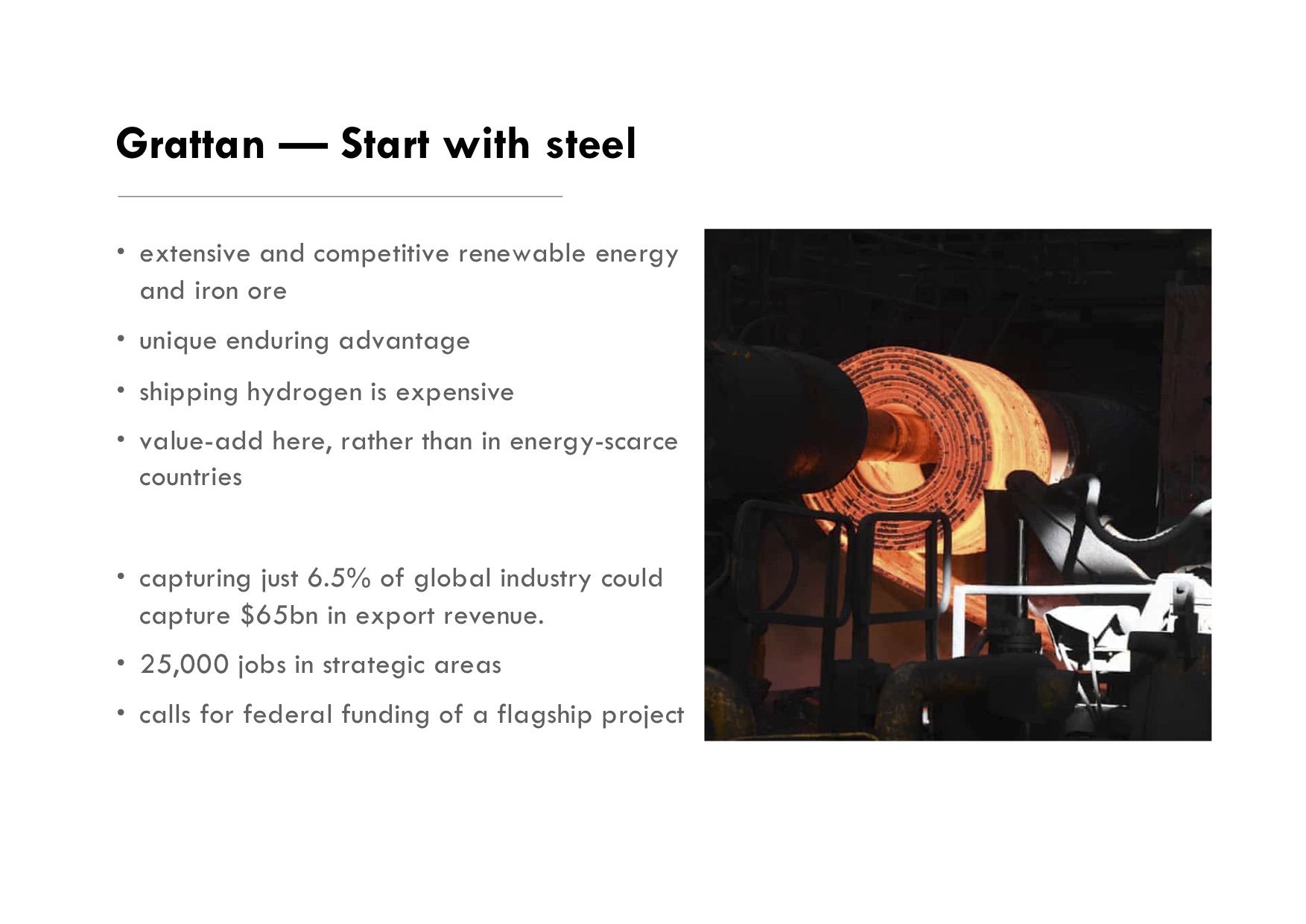
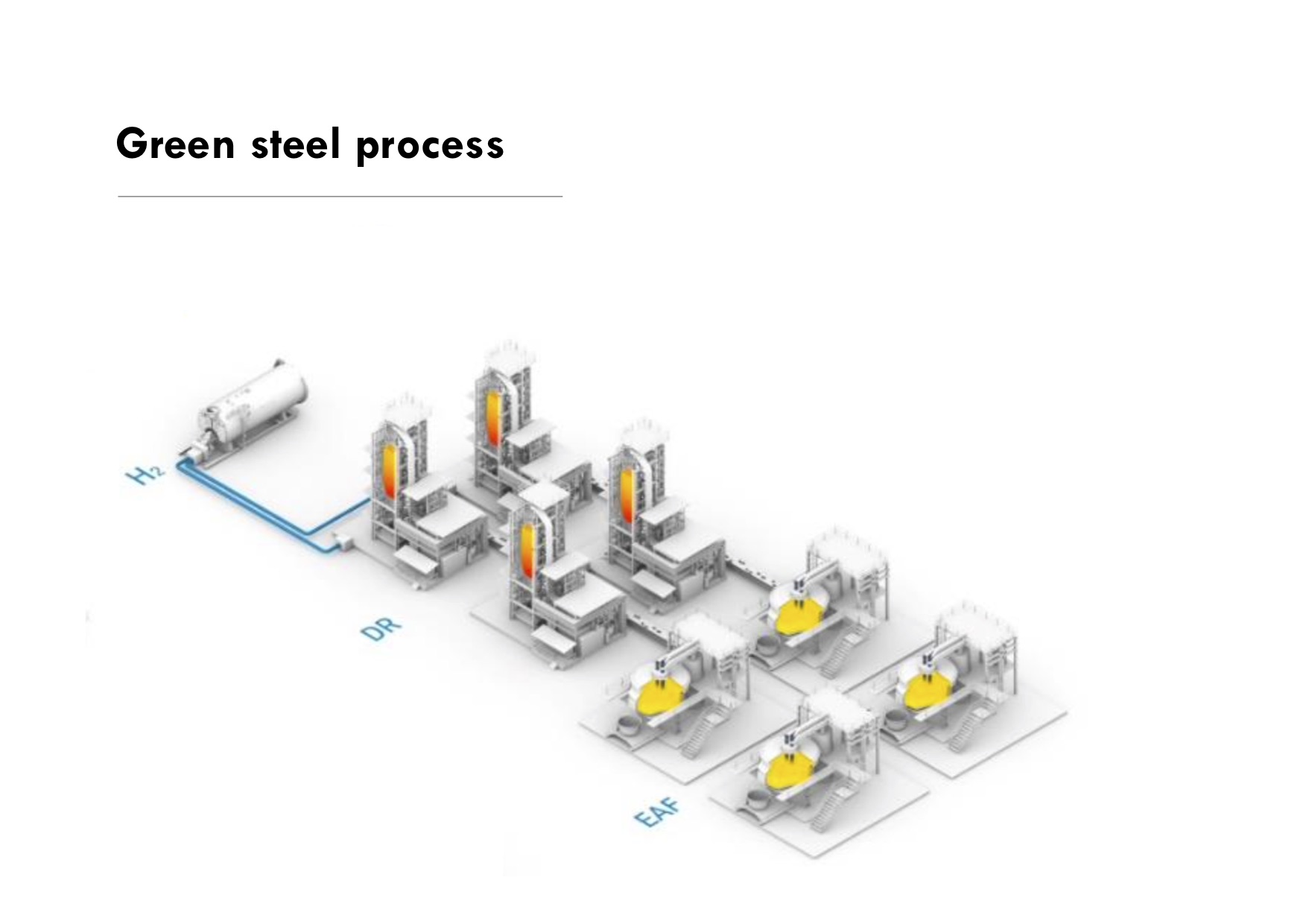
Green steel making: renewable-produced hydrogen (H2), Direct Reduction and Electric Arc Furnaces.
What are the environment organisations saying?
There is a need to keep policy measures appropriate for renewing the economy in an environmental and sustainable way. The Australia Institute (TAI) has proposals for how the government could spend its stimulus funding, and Simon placed stickers against the environmental items TAI thinks are a goer, and a red one for the anti-environment one!
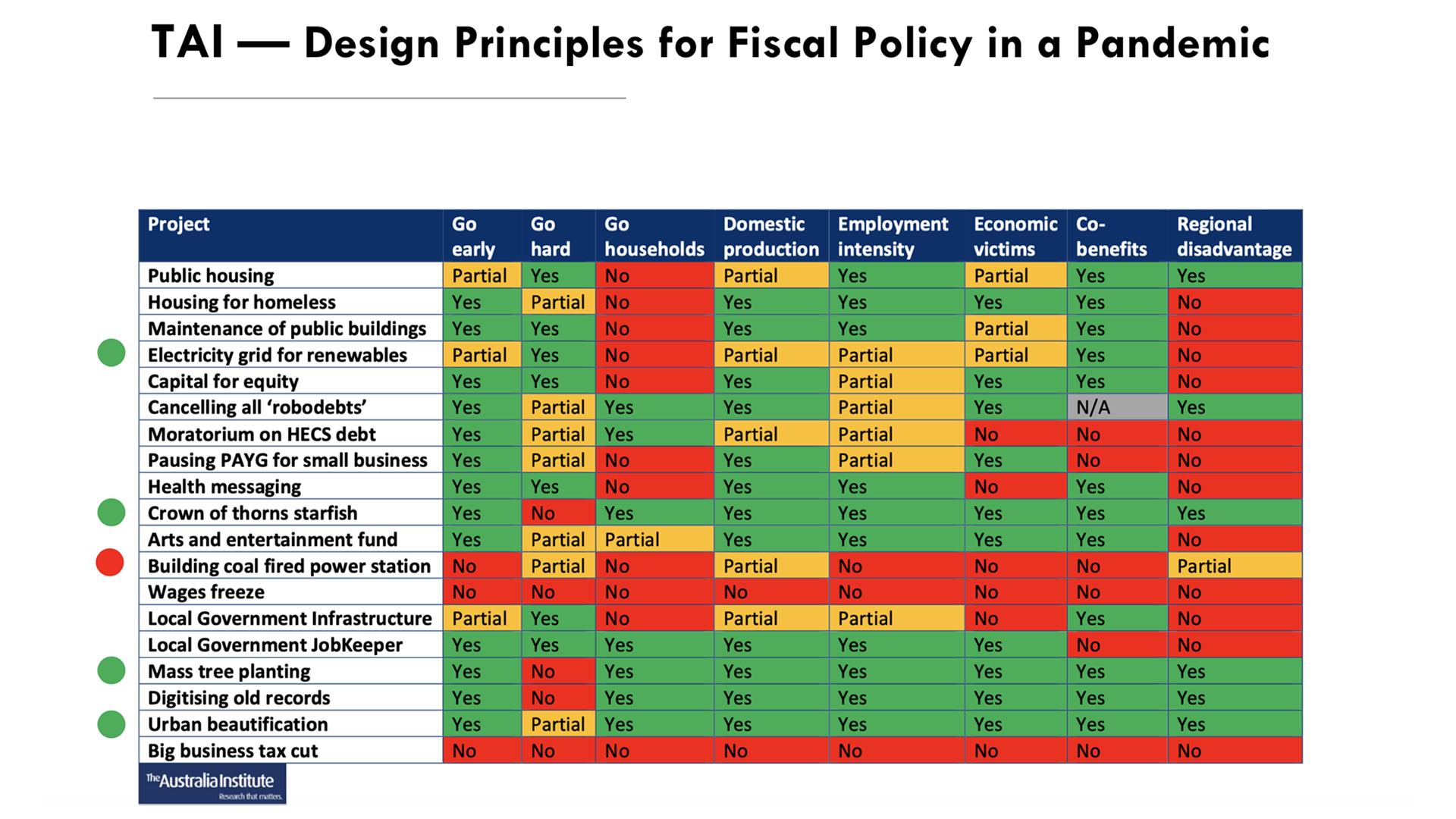
ACF is creating a plan to recover, rebuild and renew.
A lot of job creation around renewables, transmission, public spaces, national parks, environmental restoration, over short, medium and longer term.
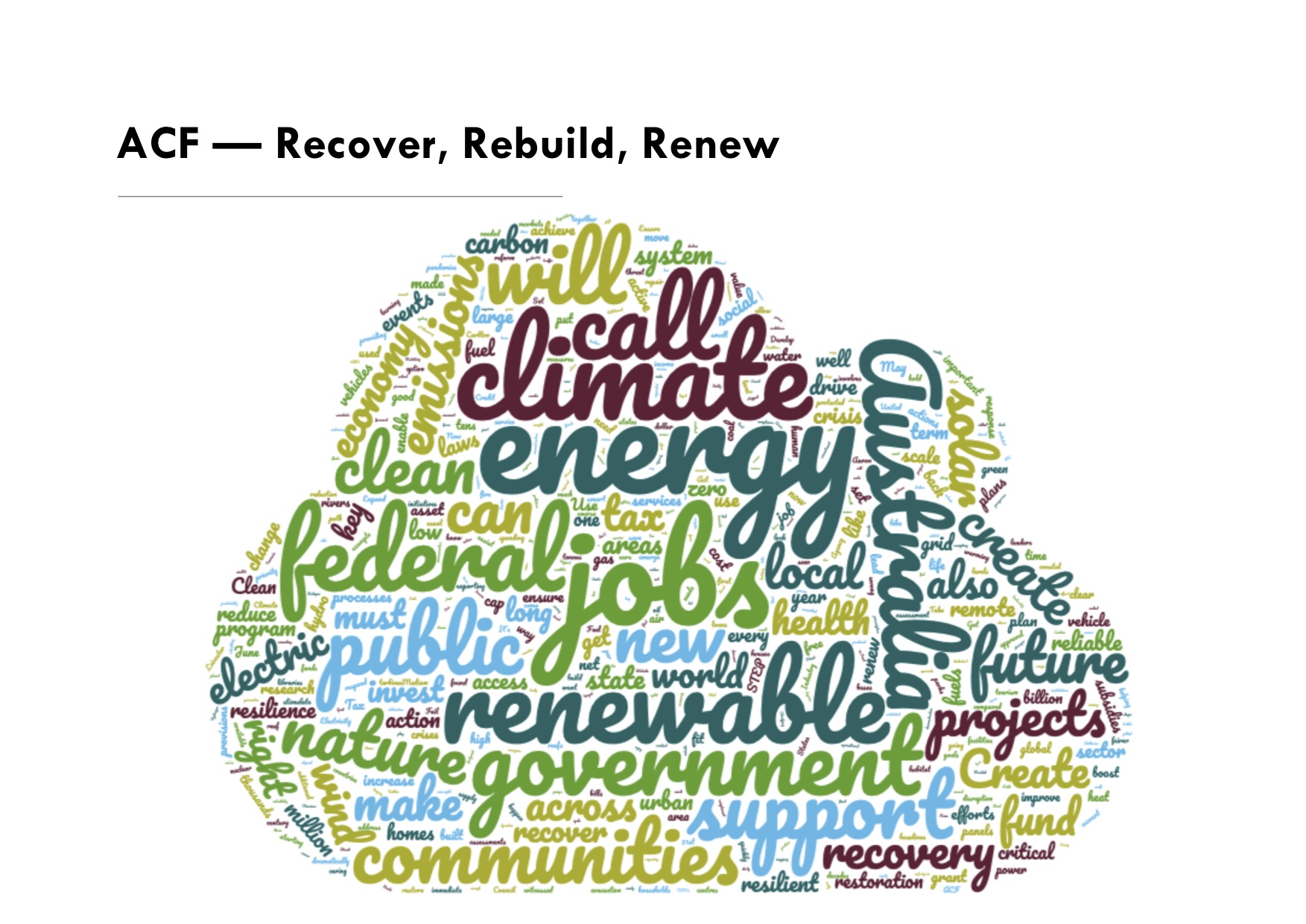
BZE has a million jobs plan in the low-carbon transition:
– Fast track renewable energy and transmission
– Millions of Zero Energy Bill buildings
– Modernising and expanding Australian manufacturing
– 100% renewable mining
– Recycling – 100% recovery of materials
– Electrified transportation
– Land restoration and carbon farming
– Community Energy and other community led initiatives.
Some mega-projects announced (Not gov funded at all)
There are a number of mega-projects in development already announced in the media:
Sun cable – 10GW solar and batteries (Tennant Creek) cable to Singapore;
BP Light-Source – 1.5GW wind and solar to green ammonia;
Asia Renew Energy Hub – 15 GW wind and solar to hydrogen;
Siemens – 5 GW wind and solar to hydrogen;
Star of the South – 2GW offshore wind in Bass Strait for Victoria.
Our Energy Minister’s gas-fired recovery after COVID-19
Angus Taylor’s gas fired recovery is unlikely. The world is already awash with cheap gas – it’s difficult to see Australia’s high-cost gas production industry ever being competitive.
The National COVID-19 Coordination Commission looks a little like a Gas Coordination Committee, littered as it is with gas and fossil fuel people. But the truth is that there is not much need for gas in the future, and that’s what will drive future energy investment.
BUT, there are reasons to be cheerful!
- Renewable energy in Australia is cost-competitive.
- There is stress on the FF generators with high maintenance costs.
- There were 4 State Energy ministers at the Stimulus Summit and they all agree that renewable energy is inevitable.
- SA will be 100% renewable by 2030.
- AEMO (Australian Energy Market Operator) is confident we can be at 75% renewables by 2025, it is technically achievable.
- The Finance sector is continuing to walk away from fossil fuels.
There is fertile ground for big ideas, even though not solicited by the Government, and they are not necessarily listening. However, these ideas are contributing to the public debate since it makes economic sense.
“It is impossible to self- isolate from Climate Change”, says former governor of the Bank of England Mark Carney. COVID-19 is a significant threat but not as big as the challenge of climate change. How we come out of the present crisis will show what we can do as a society.
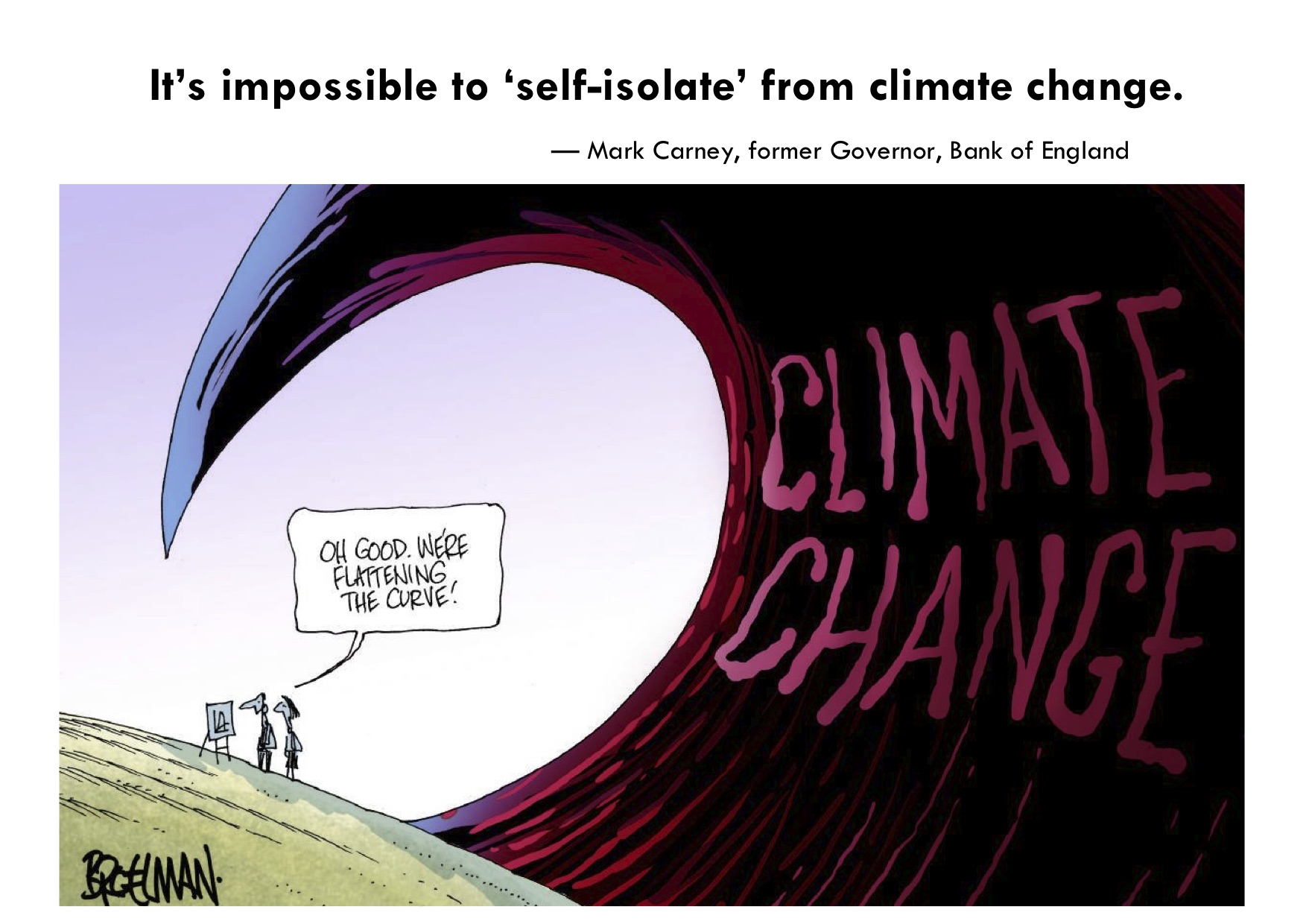
Questions and answers
Here are some of the questions Simon answered. Best way to really get a handle on these is to listen to the Facebook Live – they are good!
Are you and your colleagues being heard?
The States are listening.
What is holding Industry back?
The aluminium sector is struggling; China has flooded the market with cheap aluminium. Their power costs are high, but they could be competitive again. Sanjeev Gupta is investing in the engineering plans to transform Whyalla into a green steel industry hub using hundreds of MW of solar and storage. Carbon farming is a tough area; the major buyer at present is the Commonwealth Emissions Reduction Fund.
Should we lobby to shut down coal or lobby for new renewable targets?
Both, we need to advocate for more aggressive targets and a time-line for the orderly closure of coal.
Why has Finkel suggested phasing in hydrogen using energy from gas and coal?
He is a scientist and a politician. If he takes too hard a line he will lose his voice in Canberra – which he needs to be able to persuade.
Remember – the market is clear about bypassing gas as a transition fuel whatever Finkel says.
We need to consider transportation and agriculture as well as electricity production.
Agreed! Energy consumption is only 1% less during the COVID shutdown. Transportation will overtake other emitters. So electrification of transport is important (~1/3 of emissions in Australia?) and it must be powered by renewables.
Carolyn – A huge thank you for bringing this to us in an accessible way and giving us hope that things are happening quickly.
We even had time for Breakout groups with the question “What grabbed your imagination and who will you tell about it?” There were many productive discussions in the Zoom breakout groups.

